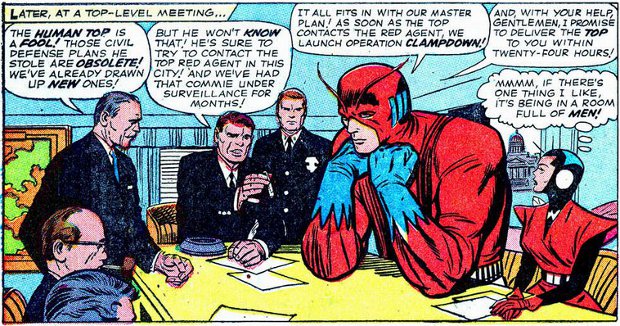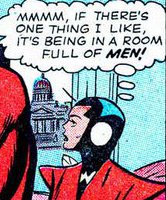
Sometimes, things that were common and acceptable at one time become unintentionally funny decades later. A great example is the panel above, in which Giant-Man (Hank Pym) and several government types are discussing how they’ll frustrate the Human Top ((a villain whom nobody could take seriously until he later changed his name to Whirlwind, and got himself a new costume that didn’t look like he had a giant onion for a head…))’s plans, what does the Wasp, a.k.a. Janet Van Dyne, Giant-Man’s girlfriend and sidekick, co-founder of the Avengers, who in the future would get to be one of the most successful leaders of that group ((in Roger Stern’s excellent run)), think of the entire situation, and what insight will she add to the discussion?

Yup. 🙂
And this was in a comic by the top creative team at the time, Stan Lee and Jack Kirby.
Now, stuff like this was actually common at the time, and nobody blinked an eye at it, or even saw any possible implications in a young woman claiming to… ahem… love being in a room full of men. 🙂 Those were indeed sexist times, and that included comics; a woman’s goal was, basically, to get married and settle down, and a “proper” woman looked up to men, depended on them, and remained silent while the males discussed the “important stuff”. Even some earlier, innovative female characters weren’t much better: remember than, when Wonder Woman joined the Justice League, she was the secretary of the group (though, of course, that’s been retconned since then). There wouldn’t be real independent women in mainstream comics until the 70s, with Ms. Marvel (Carol Danvers) being an early example; she was actually billed at the time as Marvel’s first feminist heroine.